�
Digital Airborne Camera
Digital Airborne Camera
Introduction and Technology
Edited by
Rainer Sandau
DLR, Berlin, Germany
With contributions by Ulrich Beisl, Bernhard Braunecker, Michael Cramer,
Hans Driescher, Andreas Eckardt, Peter Fricker, Michael Gruber, Stefan Hilbert,
Karsten Jacobsen, Walfried Jagschitz, Herbert Jahn, Werner Kirchhofer, Klaus J.
Neumann, Rainer Sandau, and Maria von Schönermark
123
�
Editor
Dr. Rainer Sandau
Deutsches Zentrum for
Luft- und Raumfahrt e.V.
(DLR)
Rutherfordstr. 2
12489 Berlin
Germany
rainer.sandau@dlr.de
This is a translation of the book in German “Digitale Luftbildkamera − Einführung und Grundlagen”,
by Rainer Sandau, published by Wichmann Verlag, 2005; including some new additions in chapter 7
(Examples)
ISBN 978-1-4020-8877-3
DOI 10.1007/978-1-4020-8878-0
Springer Dordrecht Heidelberg London New York
e-ISBN 978-1-4020-8878-0
Library of Congress Control Number: 2009940584
© Springer Science+Business Media B.V. 2010
No part of this work may be reproduced, stored in a retrieval system, or transmitted in any form or by
any means, electronic, mechanical, photocopying, microfilming, recording or otherwise, without written
permission from the Publisher, with the exception of any material supplied specifically for the purpose
of being entered and executed on a computer system, for exclusive use by the purchaser of the work.
Cover illustration: Transparent view of the ADS40 camera made by Leica Geosystems AG.
Printed on acid-free paper
Springer is part of Springer Science+Business Media (www.springer.com)
�
Preface
Digital airborne cameras are now penetrating the market of photogrammetry and
remote sensing. Owing to rapid progress in the last 10 years in fields such as detec-
tor technology, computer power, memory capacity, and measurement of position
and orientation, it is now possible to acquire, with the new generation of digital
airborne cameras, different sets of geometric and spectral data with high resolution
within a single flight. This is a decisive advantage over aerial film cameras. The
linear characteristic of the optoelectronic converters is at the root of this transfor-
mation from an imaging camera to a measuring instrument that captures images.
The direct digital processing chain from the airborne camera to the derived prod-
ucts involves no chemical film development or digitisation in a photogrammetric
film scanner. Causes of failure, expensive investments and prohibitive staff costs are
avoided. The effective use of this new technology, however, requires knowledge of
the characteristics, possibilities and restrictions of the formation of images and the
generation of information from them.
This book describes all the components of a digital airborne camera, from the
object to be imaged to the mass memory device on which the imagery is written in
the air. Thus natural processes influencing image quality are considered, such as the
reflection of the electromagnetic energy from the sun by the object being imaged
and the influence of the atmosphere. The essential features and related parame-
ters of the new technology are discussed and placed in a system framework. The
complex interdependencies between the components, for example, optics, filters,
detectors, analogue and digital electronics, and software, become apparent. The
book describes several systems available on the market at the time of writing.
The book will appeal to all who want to be informed about the technology of
the new generation of digital airborne cameras. Groups of potential readers include:
managers who have to decide about investment in and use of the new cameras;
camera operators whose knowledge of the features of the cameras is essential to
the quality of the data acquired; users of derived products who want to order or
effectively process the new digital data sets; and scientists and university students,
in photogrammetry, remote sensing, geodesy, cartography, geospatial and environ-
mental sciences, forestry, agriculture, urban planning, land use monitoring and other
fields, who need to prepare for the use of the new cameras and their imagery.
v
�
vi
Preface
a
translation of
This book is
the publication in German, Digitale
Luftbildkamera − Einführung und Grundlagen, published in 2005 by Herbert
Wichmann Verlag in Heidelberg. Only Chapter 7 was extended to three example
camera systems which are being marketed worldwide and are also roughly represen-
tative of the bandwidth of the implementation variations. I would like to acknowl-
edge Wichmann Verlag’s gracious agreement to transfer the English-language rights
to Springer.
I would like also to acknowledge the help that the contributors to this book
received from a number of individuals:
Ms. Ute Dombrowski (DLR, Berlin, Germany), who was very supportive in typ-
ing large parts of the manuscript, dealing with figures and tables, editing the chapters
of the various authors, and combining the results into a book.
Dr. A. Stewart Walker (BAE Systems, San Diego, USA), who proof-read the
entire manuscript in order to polish and homogenise the usage of the English
language in the translation from German carried out by the authors.
Dipl.-Ing. Dieter Zeuner (formerly Applanix, Toronto, Canada), who contributed
to the translation of the German version.
Prof. Dr.-Ing. Hans-Peter Röser
Institut
für
Photogrammetrie, Germany; formerly DLR, Berlin, Germany), who led the
DLR team during the joint development of the ADS40 with Leica and LH Systems.
Ms. Petra van Steenbergen of the publisher, who supported the creation of the
(Unversität
Stuttgart,
book through pleasant, patient collaboration.
Berlin, Germany
April 2009
Rainer Sandau
�
Contents
1 Introduction .
.
.
.
.
.
.
.
.
.
.
.
.
.
.
.
. .
. . . . . . . . . . .
. .
. . . . . . . . . .
1.1
1.2
1.3
Detection, Recognition, Identification .
From Analogue to Digital Airborne Cameras
Applications for Digital Airborne Cameras
in Photogrammetry and Remote Sensing . . . . . . . . . . . . .
Aircraft Camera or Satellite Camera . . . . . . . . . . . . . . .
. . . . . . . .
1.3.1
. . . . . . . . .
. . . . . .
. . . . . . .
. .
. . . . . . . .
Selection of Commercial Digital Airborne Cameras .
1.5.1
1.5.2
1.5.3
.
ADS80 .
DMC .
.
UltraCam .
.
. . . . .
. . . . . . .
. . . . . . . .
1.4 Matrix Concept or Line Concept .
1.5
. . . . . . .
. . . . . .
.
.
.
.
.
.
.
.
.
.
.
.
.
.
.
.
.
.
.
.
.
.
.
.
.
.
.
2 Foundations and Definitions .
.
.
.
.
.
.
2.1
2.2
2.3
2.4
2.5
2.6
2.7
2.8
2.9
.
.
.
.
.
.
.
.
.
.
.
.
.
.
.
.
.
.
.
.
.
.
.
.
.
.
.
.
.
.
.
.
.
.
.
.
.
.
.
.
.
.
.
.
.
. . . .
. . . .
. . . . . . . . .
. . . . . . . . . .
. . . .
. . . . .
.
.
.
. . . . . . . . . .
Introduction .
.
Basic Properties of Light . . .
. . . . .
Fourier Transforms . . . . . . . . . . . . . . . . . . . . . . . .
. . . . .
.
Linear Systems . . .
. . . . .
.
Sampling .
.
. . . . . . . . . .
. . . .
Radiometric Resolution and Noise .
Colour
.
. . . .
Time Resolution and Related Properties . . . . . . . . . . . . .
Comparison of Film and CCD . . . . . . . . . . . . . . . . . .
2.9.1
. . . . .
.
. . . .
. . . . . . .
. . . . . . .
Comparison of the Imaging Process and the
.
Characteristic Curve .
.
.
Sensitivity .
.
Noise
.
.
Signal to Noise Ratio (SNR)
.
Dynamic Range . . .
.
.
.
.
.
.
.
.
.
.
Stability of Calibration .
.
Spectral Range
.
.
. . . .
. . . . .
. . . . . .
. . . . . . . . . . . . .
. . .
. . . .
. . . . . .
. . . . . . . . .
. . .
. . . . . .
.
2.9.2
2.9.3
2.9.4
2.9.5
2.9.6 MTF .
.
.
2.9.7 MTF · Snr .
2.9.8
2.9.9
2.9.10 Summary .
. . . . . .
. . . . . . . .
. . . .
. . . . . .
. . . . . .
. . .
. . . . . . . .
.
.
. . . . .
.
. . . . . . . . . . .
. . . . . . . . . .
. . . . . .
. . .
.
.
. . . . .
. . . . .
. . .
.
.
.
.
.
.
.
.
.
.
.
.
.
.
.
.
.
.
.
.
.
.
.
.
.
.
.
.
.
.
.
.
1
1
8
13
16
20
27
27
29
29
31
31
34
41
56
69
78
89
95
99
99
101
102
102
103
104
104
105
106
107
vii
�
viii
Contents
2.10 Sensor Orientation .
.
.
.
.
.
.
.
.
. .
2.10.1 Georeferencing of Sensor Data . . . . . . . . . . . . .
2.10.2 Brief Review of GVP Concepts GPS . .
. . . . . . . .
. . . . . . . . . . . . .
2.10.3 Basics of Inertial Navigation .
. . . . . . . .
2.10.4 Concepts of Inertial/GPS Integration . .
. . . . . . . . . .
. . .
3 The Imaged Object and the Atmosphere . . . . .
. . . .
. . . . . .
Radiation in Front of the Sensor .
.
Radiation at the Sensor .
.
Contrast of a Scene at the Sensor .
. . . . . .
Bi-directional Reflectance Distribution Function BRDF . . . . .
. . .
. . . .
. . .
. . . . . . . . . .
. . . . . .
. . . . . .
. . . . . .
.
.
.
.
.
.
.
3.1
3.2
3.3
3.4
4 Structure of a Digital Airborne Camera . . . .
.
107
107
116
121
128
131
131
134
137
138
143
143
149
151
151
153
153
154
154
155
156
157
159
160
169
171
172
175
177
180
180
183
183
184
188
196
210
210
212
213
215
217
221
.
.
.
.
.
.
.
.
.
.
.
.
.
.
.
.
.
.
.
.
.
.
.
.
.
.
.
.
.
.
.
.
.
. . .
. . .
. . . .
. . . .
. . . . .
. . . . .
. . . . . .
. . . . . . . . .
. . . . . . . . .
. . . . . . . .
.
. . . . . .
. . . . . . . . . .
.
Introduction .
4.1.1
Example . .
Optics and Mechanics
4.2.1
4.2.2
4.2.3
4.2.4
4.2.5
4.2.6
. .
. . .
.
. . . . . . . . . . .
.
. . . .
.
. . . . .
Effect of Geometry .
. . . . . . .
The Effect of the Wave Nature of Light . .
Space-Bandwidth Product . . . . . . . . . . . . . . . .
Principal Rays . . . . . . . . . . . . . . . . . . . . . .
Physical Imaging Model
. . . . . . . . . . . . .
Data Transfer Rate of High Performance
Optical System .
. . . . .
Camera Constant and “Pinhole” Model . . . . . . . . .
4.2.7
Pupil Characteristics
.
4.2.8
. . . . . . . .
Design and Manufacturing Aspects . . .
4.2.9
4.2.10 Summary of the Geometric Properties of an Image . . .
4.2.11 Aberrations and Precision of Registration . . . . . . .
4.2.12 Radiometric Characteristics . . . . . . . . . . . . . . .
4.2.13
Ideal Optical Transfer Function . . . . . . . . . . . . .
4.2.14 Real Optical Transfer Function . . . . . . . . . . . . .
4.2.15 Field Dependency of the Optical Transfer Function . .
. . . .
Filter
. . .
. . .
.
. . . . . . .
Absorption Filters . .
4.3.1
4.3.2
. . . . . . .
Interference Filters
.
. . . . .
Opto-Electronic Converters
.
. . . .
Operating Principle .
4.4.1
CCD Architectures
4.4.2
.
. . .
. . . . . . . . . . . . .
4.4.3
Properties and Parameters . . .
Focal Plane Module
. . . . .
Basic Structure of a Focal Plane Module . . . . . . . .
4.5.1
Up-Front Electronic Components
. . . . . . . . . . . . .
. . . . . . . . . . . . . . . . . . . . . .
4.6.1
4.6.2
. . .
4.6.3
. . . . . . . . . . . . .
Digital Computer . . . . . . . . . . . . . . . . . . . . . . . . .
CCD Control
Signal Pre-Processing .
Analogue-Digital Conversion .
. . . . . . . .
. . . . . .
. .
. .
. . . . . .
. . . . . .
. . .
. . . . .
. . . . . . . .
. . . . . . .
. . . . . .
. . . . . .
. . . . .
. . . . .
. . . .
. . .
.
.
.
.
.
.
.
.
.
.
.
.
.
.
.
.
.
.
.
.
.
.
.
.
.
.
.
.
.
.
.
.
.
.
.
.
.
4.1
4.2
4.3
4.4
4.5
4.6
4.7
�
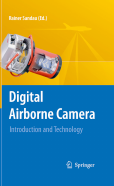
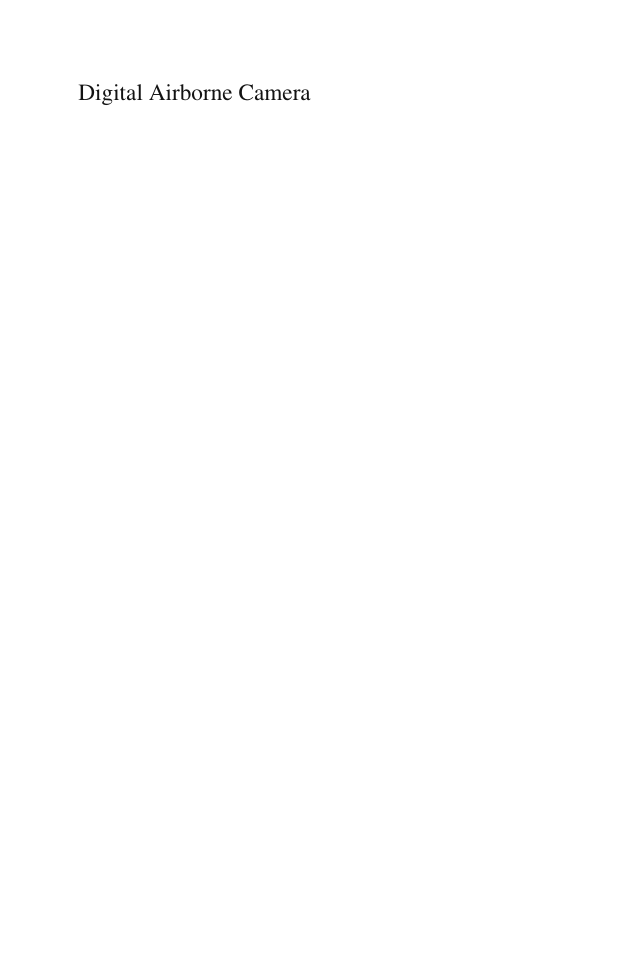
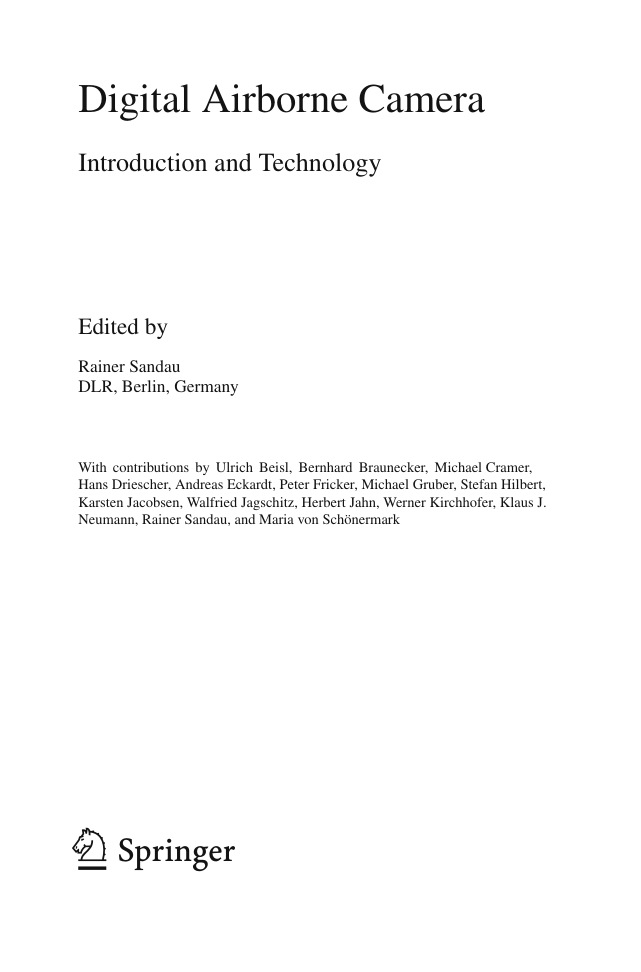
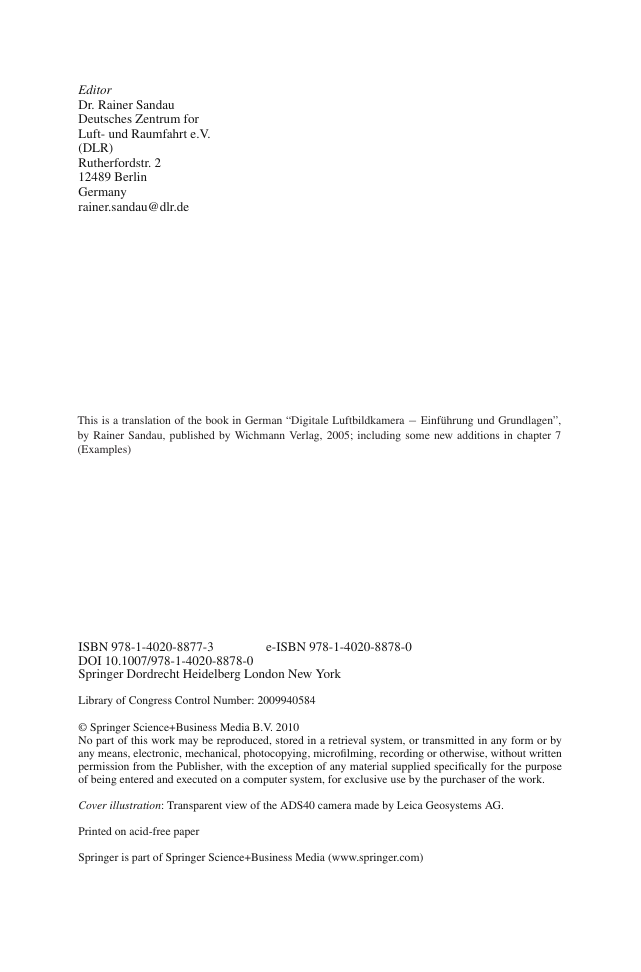
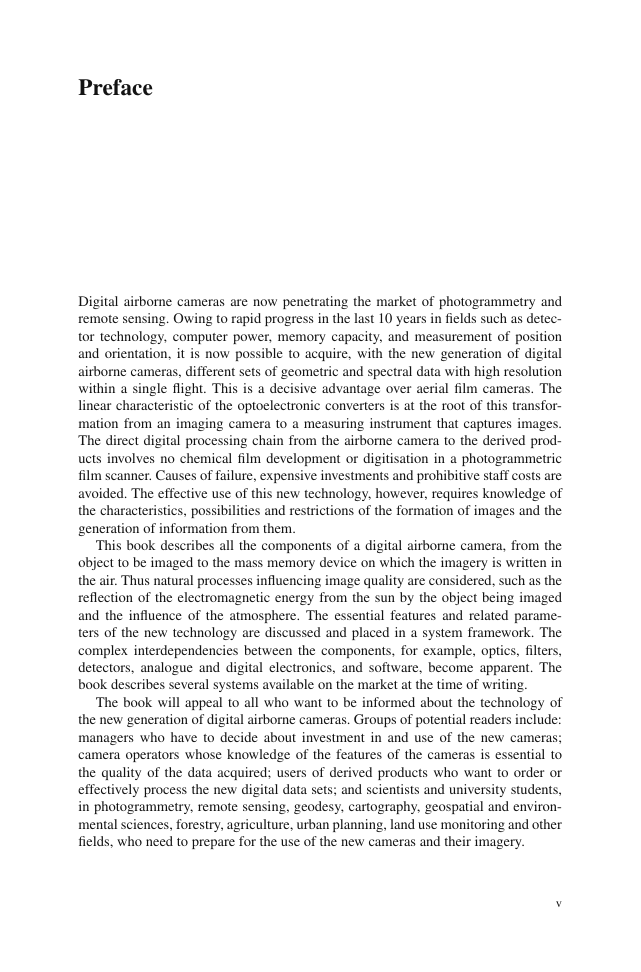
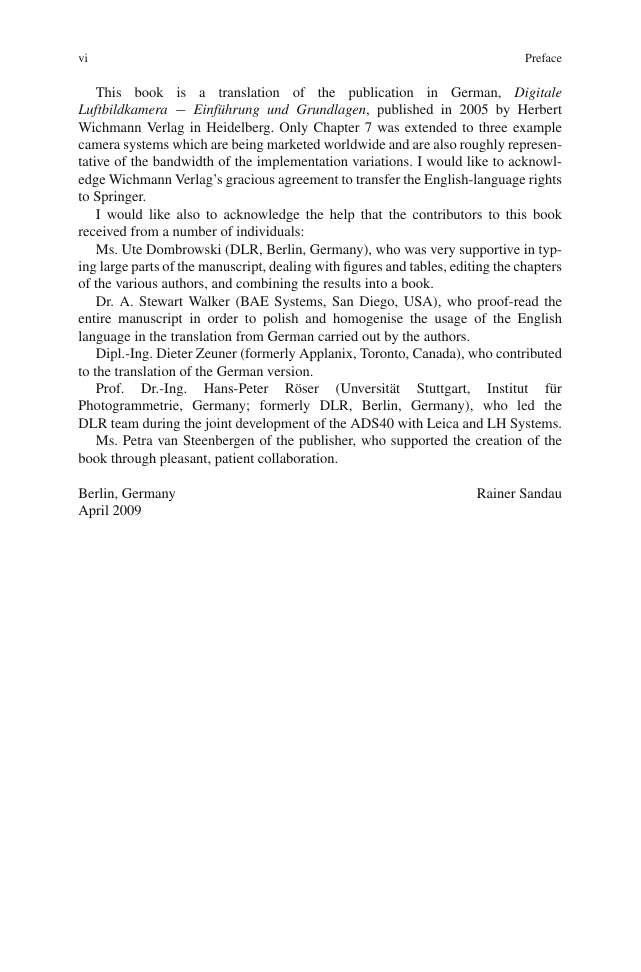
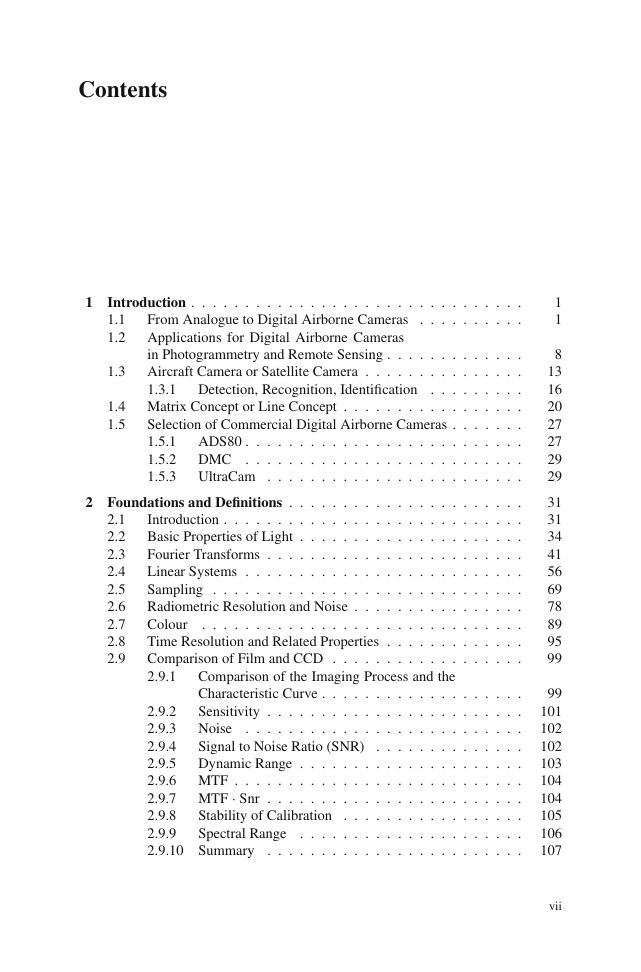
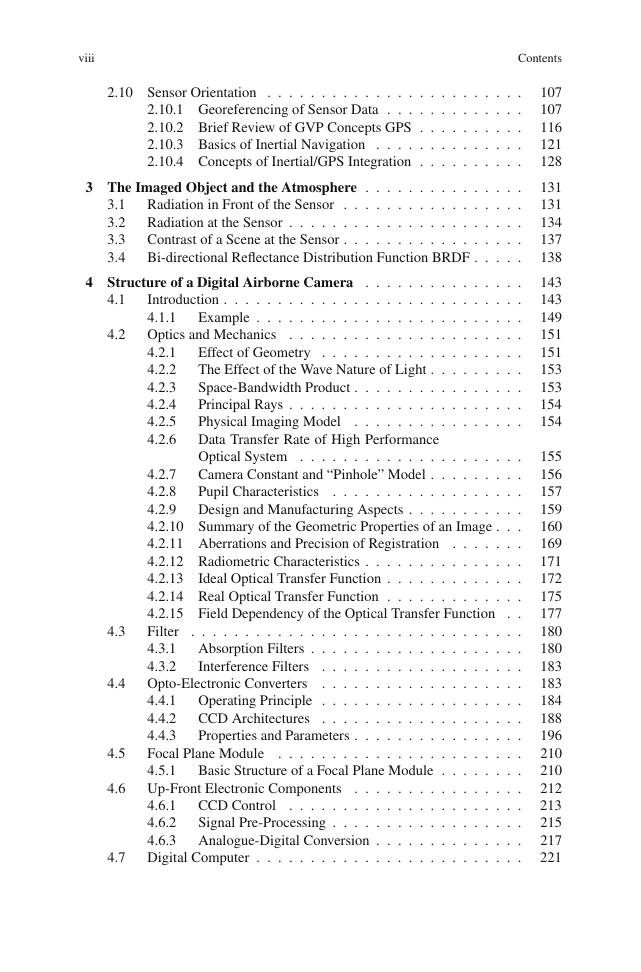








 2023年江西萍乡中考道德与法治真题及答案.doc
2023年江西萍乡中考道德与法治真题及答案.doc 2012年重庆南川中考生物真题及答案.doc
2012年重庆南川中考生物真题及答案.doc 2013年江西师范大学地理学综合及文艺理论基础考研真题.doc
2013年江西师范大学地理学综合及文艺理论基础考研真题.doc 2020年四川甘孜小升初语文真题及答案I卷.doc
2020年四川甘孜小升初语文真题及答案I卷.doc 2020年注册岩土工程师专业基础考试真题及答案.doc
2020年注册岩土工程师专业基础考试真题及答案.doc 2023-2024学年福建省厦门市九年级上学期数学月考试题及答案.doc
2023-2024学年福建省厦门市九年级上学期数学月考试题及答案.doc 2021-2022学年辽宁省沈阳市大东区九年级上学期语文期末试题及答案.doc
2021-2022学年辽宁省沈阳市大东区九年级上学期语文期末试题及答案.doc 2022-2023学年北京东城区初三第一学期物理期末试卷及答案.doc
2022-2023学年北京东城区初三第一学期物理期末试卷及答案.doc 2018上半年江西教师资格初中地理学科知识与教学能力真题及答案.doc
2018上半年江西教师资格初中地理学科知识与教学能力真题及答案.doc 2012年河北国家公务员申论考试真题及答案-省级.doc
2012年河北国家公务员申论考试真题及答案-省级.doc 2020-2021学年江苏省扬州市江都区邵樊片九年级上学期数学第一次质量检测试题及答案.doc
2020-2021学年江苏省扬州市江都区邵樊片九年级上学期数学第一次质量检测试题及答案.doc 2022下半年黑龙江教师资格证中学综合素质真题及答案.doc
2022下半年黑龙江教师资格证中学综合素质真题及答案.doc